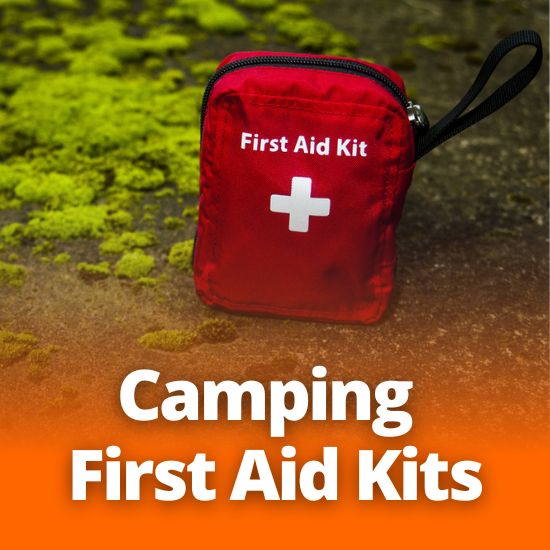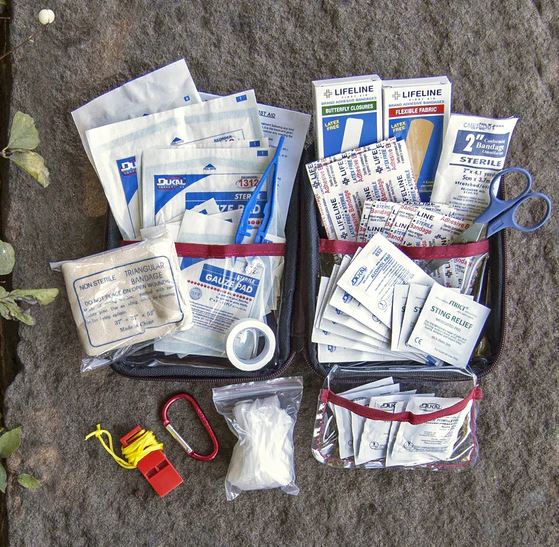
Camping First Aid Kit
Every time I have had a first-aid kit on hand I never needed it, so of course the times where I could really use a bandage, I didn’t have any on hand. There truly is a weird feeling of chagrin that comes over you when you have to go into the closest store, walk up to a sales associate and ask -with blood running down your hand- “Do you have a bandage?” (true story, I never went back there)
Best to keep a first-aid kit on hand, sometimes it means you’re less likely to jinx yourself and end up injured. First-aid kits can be easily purchased ready-made, or you can assemble your own depending on your needs. If you’re traveling with pets, having a dog or cat specific kit on hand can sometimes be crucial.
The main things to note are that the kit itself, whether purchased or assembled, is waterproof to avoid damage. Also note that the majority of commercially available kits in Canada do not come with pharmaceutical products, so you’ll want to throw in things like antiseptic creams or Advil.
Pack you kit according to your activities: what are the chances you’ll run into poison oak or get bit by a spider for example. As well as taking into account how many people are on your trip and what their needs may be: does one of your friends carry an epi-pen and does everyone know how to administer it in an emergency? If you plan on traveling lightly for an overnight backpacking trip for example, be sure that your kit can fit in your backpack so consider how heavy it is.
Along with this, consider investing in a first aid booklet and learning basic CPR. The Canadian Red Cross and St. John Ambulance offer a variety of emergency courses, including wilderness first aid. If you’re boondocking or tend to go more off-road, these can be key skills.
Besides the basics of bandages, cleansing wipes, and antiseptic, remember to include any current prescriptions, sunscreens and lip balms. These don’t have to be in the first aid kit, just know where they are. As well as allergies you should know if anyone in the camping party has a medical condition, note it on a card and what to do in case of an emergency.

Here are a few crucial items to include in your first-aid kit:
- Sterile dressings and assortment of waterproof bandages
- Gauze bandage (tensor) and a few safety pins
- Cotton pads and swabs
- Antibiotic spray and ointment
- Antihistamine and bug bite/anti-itch treatments (such as cortisone creams)
- Aloe vera gel or sunburn cream (remember to pack and use sunscreen)
- Antacid and anti-diarrheal medicines
- Eye drops (allergy or otherwise)
- Tweezers and a tick-removal tool (learn how to properly remove a tick!)
- Latex-free gloves and/or hand sanitizer (not for cleansing wounds!)
- Thermometer
- Whistle
- Compact emergency blanket
- Small flashlight
- Resealable plastic bags (in case anything in the kit gets wet)
Additional items to consider:
- Disposable masks/CPR mask
- Closure strips for wounds
- Surgical scissors
- Moleskin (to help prevent chafing or blisters)
- Eye wash cup
- Emergency fire starter or fire stick
- Pocket mirror (to shine in case you are lost)
- Instant ice packs
Remember to replace items you use during or at the end of your trip and check expiration dates before each camping season. Discard anything that has been unused for too long as temperature fluctuations and moisture could affect some items.
As always, camp safe and have fun!
(Information from Camping & RV in BC www.campingrvbc.com; Canadian Red Cross)